Plant of the Week: December 15, 2016
When Lynn and I bought our first home in the Dallas area in December, 1970, nurseryman (and my friend!) Steve Dodd Sr. gave us a housewarming gift. It was a tree-form Nellie R. Stevens holly, and Steve told me, “This is one of the greatest new shrubs we’ve ever seen.” Coming from a former president of the Texas Association of Nurserymen and a family of legendary nursery proportions, those words carried great weight. In fact, that plant came from the huge wholesale nursery owned by his brother Tom Dodd in Semmes, Alabama.
Steve was correct. This is a magnificent shrub, and it’s adapted to almost all of Texas. It grows in sun or shade, acidic or alkaline soils and without any major pest problem.
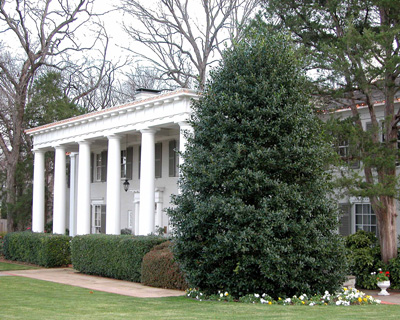
Photo: Lest you think of Nellie R. Stevens as a small holly, remember this photo from Addison City Hall.
Untrimmed and given proper water and fertilizer, Nellie R. Stevens hollies grow to be 15 or 18 feet tall and 12 or 14 feet wide. With occasional and selective pruning (every three or four years), it can be maintained at 8 to 12 feet tall. If that’s still too tall, switch over to its smaller cousins such as Willowleaf holly.
Nellie R. Stevens hollies bear multitudes of large red berries, and they hold them all winter (until migration of the cedar waxwings). It may take young plants a few years to start producing fruit, but once they do, they’re annual performers. And all plants will have berries. Unlike some hollies, such as yaupons and possumhaws, all Nellie R. Stevens have both male and female flower parts on the same plant, hence all bear fruit.
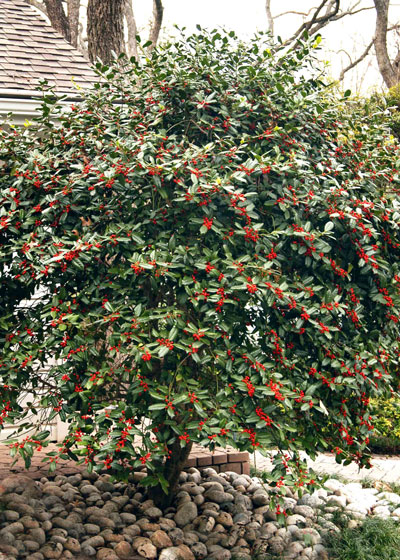
Photo: Shrub-form plant had grown too wide for its spot on the Sperry driveway.
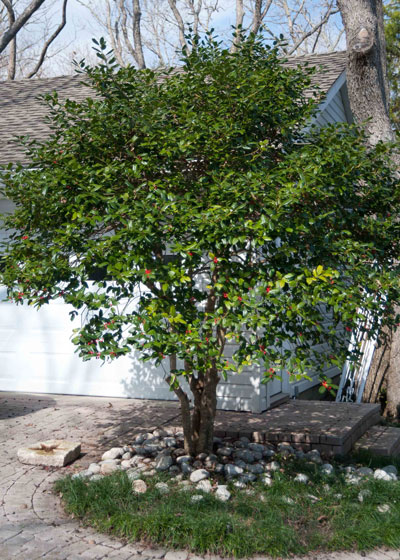
Photo: Trimmed into the form of a small tree, it was much more manageable in its surroundings six months later.
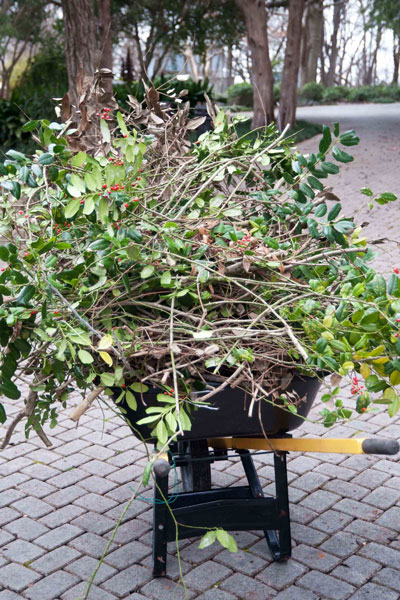
Photo: These are the trimmings that were removed in the process.
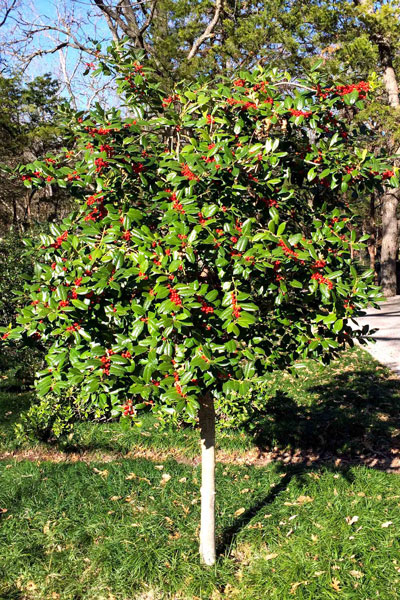
Photo: In another location, we have planted yet another tree-form Nellie R. Stevens. It’s worth noting that I had to apply paper tree wrap around the trunk to discourage a busy woodpecker.
There is a curious side story to Nellie R. Stevens hollies. This plant came from one seed collected from a Chinese holly (Ilex cornuta) at the United States National Arboretum in Washington D.C. by none other than Ms. Nellie R. Stevens in 1902. As it sprouted, she planted it in her Maplehurst Gardens in Oxford, Maryland. And there it grew for 50 years, until it was observed by nurseryman G.A. Van Lennep Jr. He collected cuttings, propagated them, named it (in honor of Ms. Stevens) and registered it in 1967. Had it not been for Van Lennep, we might have missed this great plant entirely.
The Sperry home landscape would be barren indeed if it weren’t for our Nellie R. Stevens hollies. 50 years after Steve Dodd’s kind gift, I’m just as much in love with Nellie as I was back then. And my wife is fine with that.
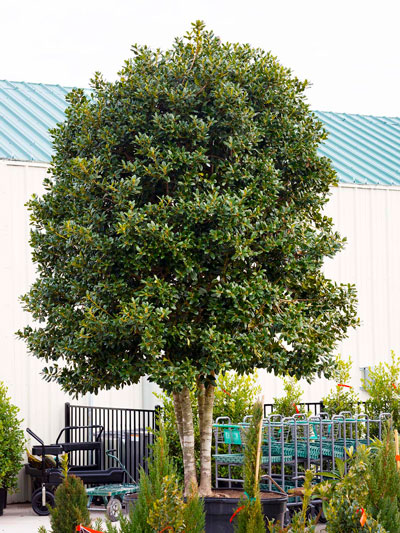
Photo: Many of the better nurseries now offer larger tree-form Nellie R. Stevens hollies. This was one at Covington’s in Rowlett two years ago. Last time I was there I noticed they have others in stock.
